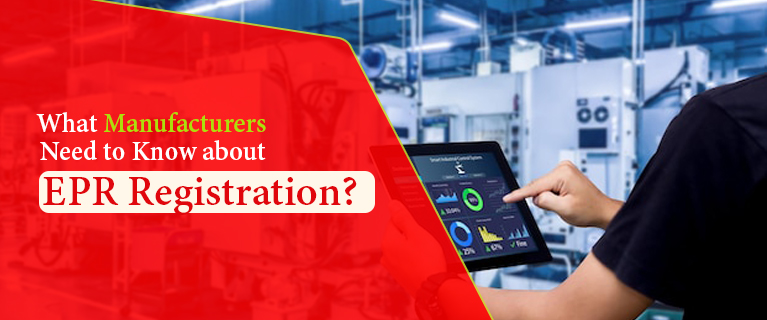Insights On CPCB EPR Online Registration
In today's fast-paced world, the production and consumption of electronic products have surged, leading to a corresponding increase in electronic waste (e-waste). With environmental concerns taking center stage, governments worldwide are implementing measures to manage e-waste responsibly. In India, the Central Pollution Control Board (CPCB) has introduced the concept of Extended Producer Responsibility (EPR) to address the e-waste challenge. Through CPCB EPR registration online, producers of electronic products can fulfil their environmental responsibility and contribute to a sustainable future. In this blog, we will explore the significance of CPCB EPR registration online, the benefits it offers, and the step-by-step process for businesses to comply with EPR regulations.
Understanding Extended Producer Responsibility (EPR)
Extended Producer Responsibility (EPR) is a progressive policy approach designed to ensure that producers of goods, especially electronic products, are accountable for managing the waste generated from their products throughout their lifecycle. The concept of EPR registration shifts the responsibility for managing e-waste from the end-users to the producers. It encourages producers to take measures to minimize waste generation, promote recycling, and ensure the proper disposal of electronic products at the end of their life.
The Role of CPCB in EPR Registration
The Central Pollution Control Board (CPCB) is the apex regulatory body in India responsible for safeguarding the environment and enforcing environmental laws. In the context of EPR, CPCB plays a vital role in formulating policies, guidelines, and regulations to manage e-waste effectively. CPCB EPR registration online is a part of the broader efforts to promote sustainable waste management practices and curb the environmental impact of e-waste.
The process of CPCB EPR registration online involves the following steps:
Step 1: Understanding EPR Obligations : Before initiating the EPR registration process, producers of electronic products must understand their EPR obligations. They must determine whether their products fall under the category of 'covered electronic products' as stated by the E-Waste (Management) Rules, 2016. Covered electronic products include computers, telecommunication equipment, consumer electronics, and lamps containing hazardous substances.
Step 2: Formation of a Producer Responsibility Organization (PRO) : Producers of covered electronic products must form or collaborate with a Producer Responsibility Organization (PRO). The PRO will be responsible for implementing the EPR program on behalf of the producer and ensuring the proper management of e-waste.
Step 3: CPCB EPR Registration Online Application : Producers must visit the official CPCB website or the designated portal for EPR registration. They need to create an account and login to access the online application form.
Step 4: Submission of Required Information : In the online application form, producers need to provide essential details such as company information, including name, address, contact details, and registration documents, details of the electronic products manufactured, imported, or sold by the company and information about the PRO responsible for the EPR implementation.
Step 5: Upload Supporting Documents : Producers must upload supporting documents as per the requirements specified in the application form. These may include proof of legal entity, product details, agreement with the PRO, and any other documents as requested.
Step 6: Payment of Fees : Producers are required to pay the prescribed fees for CPCB EPR registration online. The fees may vary depending on the scale and scope of the producer's operations.
Step 7: Evaluation and Approval : After receiving the application and supporting documents, CPCB evaluates the application for completeness and compliance. If all requirements are met, CPCB grants the EPR registration approval.
Step 8: Implementation of EPR Program : Once CPCB EPR registration is approved, the producer, along with the PRO, must establish collection mechanisms for e-waste generated from their products. This may include setting up collection centers, partnering with authorized recyclers, or implementing take-back schemes.
Step 9: Annual Reporting and Compliance : As part of EPR compliance, producers must submit annual reports to CPCB, detailing the quantity of e-waste collected and recycled as per the EPR program. The reports should also include compliance with the annual recycling targets set by the government.
Step 10: Regular Audits : CPCB may conduct periodic audits to verify the producer's compliance with the EPR program and the proper management of e-waste.
Read Also This - Guide to EPR Certification for ImportersConclusion
CPCB EPR registration online is a vital step towards promoting responsible e-waste management and ensuring a sustainable future. By participating in EPR, producers of electronic products fulfil their environmental responsibility and contribute to resource conservation and public health protection.




Comments
Post a Comment